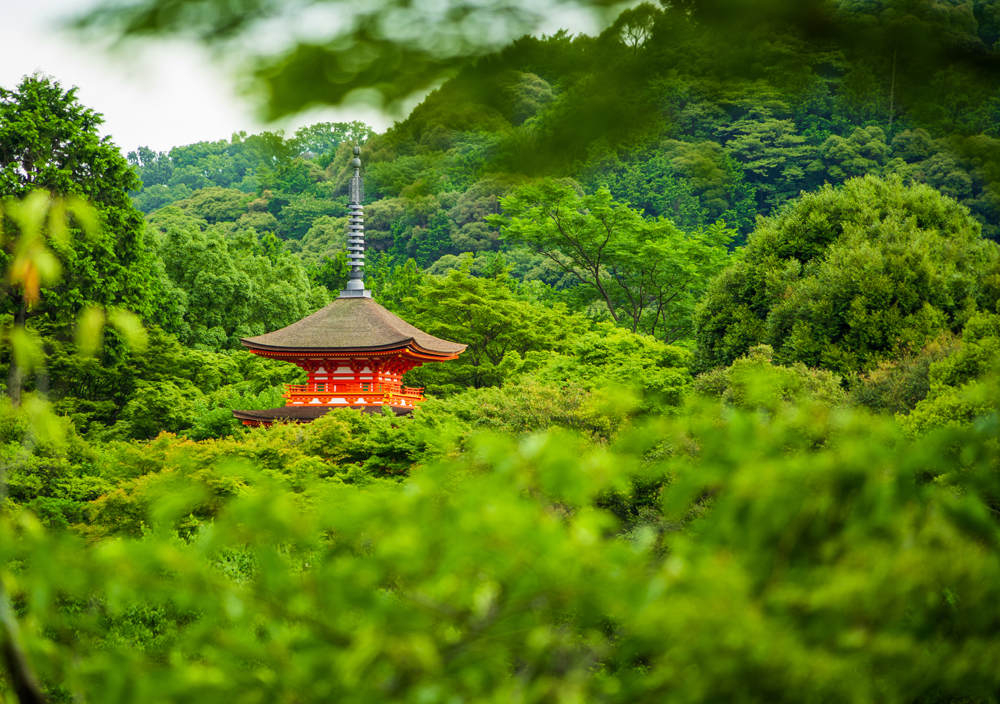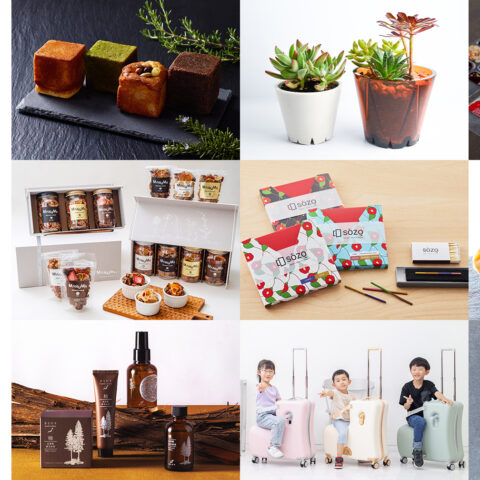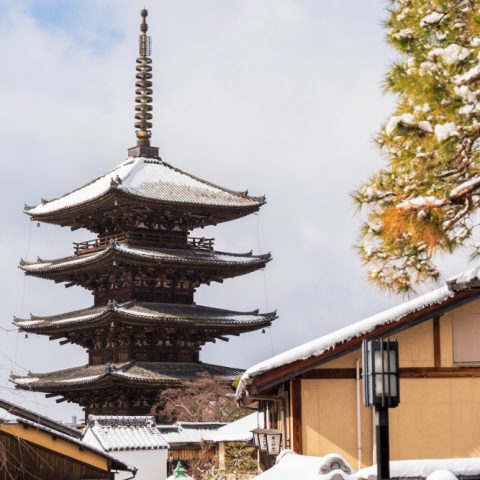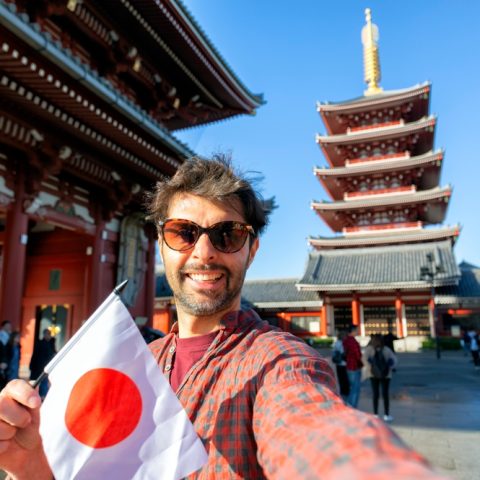
Kyoto is known for its diverse seasons, and the summer months are especially distinct. Renowned for its extremely hot and humid days, visiting Kyoto in the summertime might feel daunting when you first hear of the weather you may have to face. However, Japan’s cultural capital doesn’t let the heat stop them, and neither should you! So in order to help you, we’ve put together this post so you know what to expect, how to prepare, and the best things to see, do, and EAT as you traverse the Kyoto streets.

Photo Credit: Kyoto Machiya Inn
Planning for Kyoto in June 2023
For Kyoto, June is not only the first month of Summer but is also known as the Rainy Season. Lasting for the entire month, visitors can expect rain pretty much every day, dampening overall temperature readings, but, unfortunately, causing a rise in the humidity. So it is best to be prepared for not only the rise in the sticky, humid heat, but also for the high chance for you to get wet. The best things to pack would be lighter clothing, such as t-shirts, jeans, skirts and sandals, as well as more water-resistant clothing, such as sneakers and other waterproof shoes. Most importantly though, don’t forget your umbrella!

Image by S. Tsuchiya on Unsplash
Planning for Kyoto in July 2023
With the rainy season now officially over, July is faced with rapidly rising temperatures as Kyoto Summer kicks into full gear. With the sun now blazing in the sky, heatstroke is now something visitors should definitely be aware of. In addition, coming off the end of the rainy season, the humidity is still quite present throughout the month. Light clothing made out of cotton or other light clothing materials is the best option in order to allow your body to breathe in this thick, hot weather and you can now officially ditch your hot sneakers and other waterproof clothing pieces. Hats and sunglasses are a great option for sun protection, but if you want a chance to look into a nice Japanese parasol, then July is the best opportunity to do it. Believe me, it will DEFINITELY get its full use.

Image by Walter Mario Stein on Unsplash
Kyoto in August
There is still a bit of summer left. If you’re hoping for me to bring you bearings of cooler weather, unfortunately, I can’t say that I can, but don’t let this deter you from experiencing Kyoto during August. Fortunately for all of us, air conditioning does exist and can be found almost anywhere throughout Kyoto on these hot summer days. So make sure your suitcase is full of light, thin clothing and you always carry water with you when you’re braving the outdoors. Dresses, shorts, skirts, t-shirts, and sandals are commonplace for August, and definitely don’t forget about your hat, sunglasses, and perhaps one of the nice traditional parasols I mentioned before!
Things to Do and See in Summer

Image by Kenshi Kingami on Unsplash
In June, the Rainy Season can also be considered Hydrangea Season, where these beautiful, magical flowers are in full bloom all throughout Kyoto’s traditional Japanese Gardens. These astonishing, colour-changing flowers draw in tourists and locals alike to the thousands of famous places known for incredible hydrangea viewing. Two of the most popular places to see these flowers are Senzenin, Ohara, and the Maizuru Natural Cultural Park. In the temple of Senzenin, you can view the great culture and history whilst also being able to see more than 1000 hydrangeas dotting the landscape. Perhaps even more impressive, the beautiful and extensive Maizuru Natural City Park is said to be home to around 100,000 different hydrangea varieties, and all of them are available for you to see!

Image from Wikipedia
In July comes Kyoto’s biggest festival and one of the three biggest in Japan, the Gion Matsuri. This month-long event was originally started as a ritual to stave off plagues and evil spirits in the 9th Century and has now even been listed as a World Heritage Event. All of Kyoto is filled with purification rituals, street parties and parades of the most fabulous floats that have been put together by thousands of volunteers. It is truly a once-in-a-lifetime experience that can keep you coming back all month.

Image from Living Nomads
August may be their hottest month, but there are plenty of things still happening that are a must-visit for anyone coming to the city. First up is the amazing Gojo-zaka Toki (Pottery) Festival, taking place from the 7th to the 10th of August in the scenic streets that lead up to Kiyomizu Temple. During these three days the streets are lined with stalls that celebrate and sell traditional and modern Japanese-style ceramics, so make sure to grab yourself a souvenir! August is also known as the month of Obon, a festival for honouring ancestors, with the main date you need to remember being the 16th. On this day, hundreds of lanterns are released from the Togetsu Bridge in Arashiyama, and many bonfires shaped to represent important images and Kanji characters are lit up along the mountainsides. There are five bonfire shapes that you can find; a large myo-ho, a boat, a kanji character, and a torii-shaped bonfire. It’s an absolutely magnificent sight and something you should definitely not miss when visiting Kyoto in August.

Image from Japan Journeys
Another popular choice to avoid the heat is alfresco riverside dining, a tradition started in Kyoto hundreds of years ago that has remained popular to this day. Known as “Kowadoka” restaurants, these spots dot the Kamo River, with more going up around Kyoto every summer. Serving an array of food, Kowadoka restaurants are said to be the best place to eat the area’s most famous food of the season, Hamo, and of course, are great for enjoying some fantastic drinks! For a similar experience, make sure you head on over to the Genji Kyoto Hotel for some cool, refreshing drinks on their roof. Their beautiful decorations and roof garden make for an incredible atmosphere and a perfect place to avoid the heat. I know for a fact it’s where I’d be spending many of my summer nights!
Popular Summer Kyoto Foods

Image from Shokunin.com
Hamo
By far the most beloved of Kyoto’s foods that are available in the summer, Hamo, known in English as a “daggertooth pike conger”, is renowned for its rich nutrients and is said to fill you with stamina to help on the hot summer days. Best enjoyed in mid-July, there are so many ways hamo can be appreciated that it’s not uncommon for Kyoto restaurants to offer a full course menu only featuring this great fish. What is quite possibly the most popular way to eat hamo is the dish Hamo Otoshi. Here, it is boiled in salt water, plated to represent the beautiful Japanese gardens, and served with soy sauce and pickled plum. It is truly a decadent dish that is sure to refuel you as you traverse through the hot Kyoto streets, with the flavour being best highlighted when eaten in a Kawadoka restaurant.

Image from Kyoyasai.Kyoto
Kamo Nasu
A local staple in many Kyoto homes, the Kamo Nasu is available all summer long and is lovingly considered the Queen of Eggplants. Named after the chief production districts, Kamigamo and Nishigamo, the eggplant is quite large and characteristically round, with the flesh being nice and meaty, making it easy to distinguish. The kamo nasu is said to taste best when cooked in oil, and thus it is highly suggested that you try the beloved dish kamo nasu no agebitashi when you are visiting Kyoto at this time. Here, the eggplant is deep-fried and soaked in seasoned soup stock. The deep-frying gives the Kamo Nasu a unique texture and is absolutely delicious to eat during the hot summer days, with many from Kyoto saying that it is equal to a beautiful moment of happiness.

Image from Chickenfish.cc
Shishigatani Kabocha
Probably one of the more unique summer seasonal items, the Shishigatani Kabocha is considered more of a novelty item rather than being known for its taste. In fact, it is commonly referred to by Kyoto farmers, retailers and local consumers alike as being quite difficult to prepare and “not delicious”. Despite this, it is considered a luxury item in Kyoto and can be found displayed in local high-end restaurants and department stores as such in an attempt to attract customers. So, even if its description makes you a bit wary, it is still suggested that you at the very least pick up, or take a look at this “heirloom vegetable” whilst you’re in the area from July to mid-August.
Kyoto is known as the cultural capital of Japan and is a great area all year round. The season of Summer is definitely not an exception! So make sure you don’t let the heat deter you since there’s plenty to see and experience that can’t be found anywhere else, or at any other time of the year. As long as you’ve got your water, hat and sunnies, you’re all set to face these beautiful experiences and I certainly hope to see you there!
Featured photo by Su San Lee on Unsplash
Planning a trip to Kyoto? Make sure to book a local guide to explore the delicious dishes the city has to offer!
PIN FOR THIS LATER




